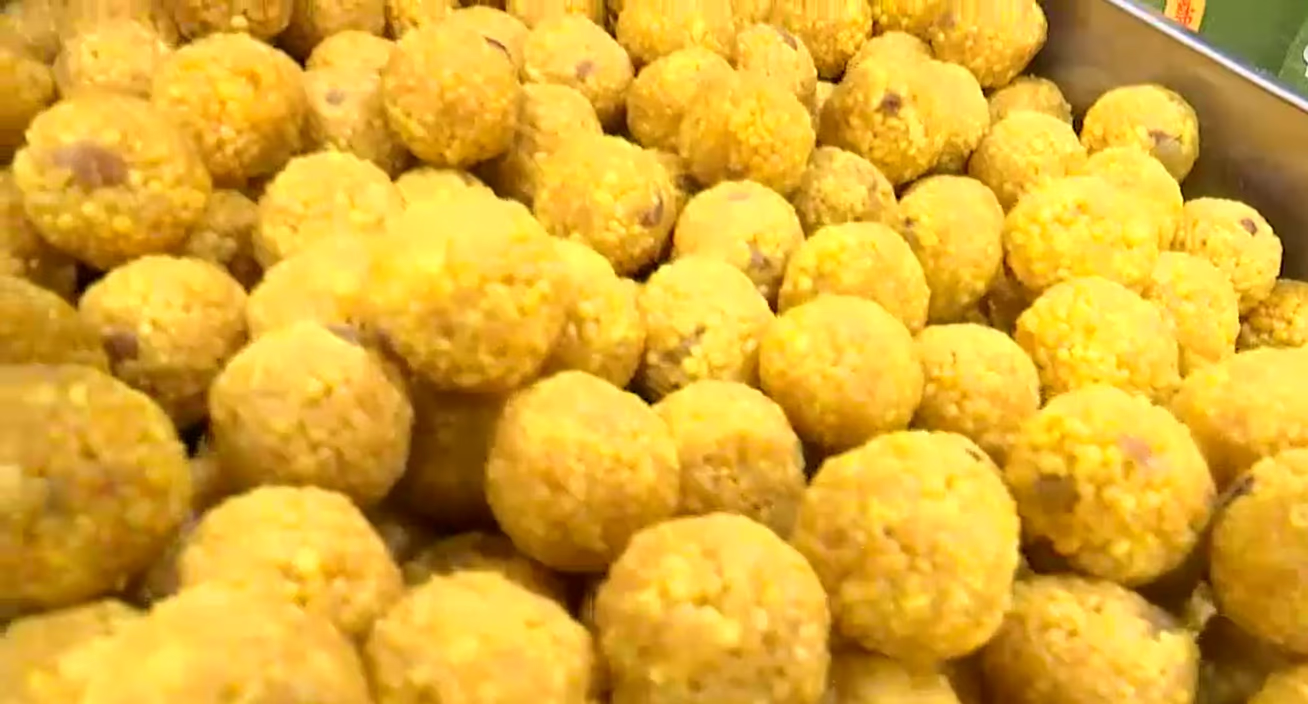The Chief Minister of Andhra Pradesh, Chandrababu Naidu, has raised questions about the laddu prasad (sweets) at the Tirupati Balaji Temple, alleging adulteration with fish oil and animal fat in the ghee. The Tirumala Tirupati Devasthanam stated that the ghee from the blacklisted supplier was approved during the Jagan Mohan government. This incident has created fear among devotees of major temples across India. Let's explore how prasad is prepared in these temples and the extent of purity maintained.
After Tirupati, the laddu prasad at Shirdi Sai Baba Temple is highly popular among devotees. Annually, around 650 tons of laddu prasad is distributed on a 'no profit, no loss' basis, and 350 tons are given for free to over 20 million devotees each year. The CEO of the Sai Baba Temple Trust claims that FSSAI standards, ghee, and dry fruits are used in laddu preparation.
Sai Baba Temple Trust CEO, Gorksha Gadeelkar, stated that devotees receive free boondi prasad after darshan. About 20 million devotees visit annually, each receiving 50 grams of prasad. Additionally, 20 rupee packets containing two laddus are available on a 'no profit, no loss' basis. Annually, 650 tons of laddu prasad are distributed under this scheme with stringent hygiene standards and adherence to FSSAI guidelines. Cow ghee, gram dal, and cardamom are used in laddu preparation.
How Prasad is Made at Siddhivinayak Temple
The debate over government control of temples following the Tirupati Balaji Temple laddu prasad controversy prompts a look at Mumbai's famous Siddhivinayak Temple where laddus and coconuts have been offered for years. Temple Trust Officer Veena Patil discussed the purity and ingredients of these offerings.

Source: aajtak
Veena Patil emphasized their commitment to quality and purity, using cow ghee, besan, cardamom powder, and cashews and raisins in laddu preparation. Staff hand-make the laddus and use machines for packaging, sourcing ingredients via e-tender with expert inspections. They produce 50,000 laddus daily, increasing to 70,000 during festivals.
Also Read -
Maintaining Purity at Kashi Vishwanath Temple
Varanasi's Kashi Vishwanath Temple sees devotees purchasing around 1,000 kg of mahaprasad (laddus) daily. In response to the Tirupati controversy, the temple staff inspected the vendors making the laddus.

Source: aajtak
Kashi Vishwanath Temple's SDM Shambhu Sharan Singh oversaw the entire laddu-making process to ensure quality and purity, with regular checks by the food department to maintain standards. Ghee lab reports have shown no issues, and further sampling is in progress. Temple priests make the prasad for offering to Baba Vishwanath ji, while prasad for devotees is sourced from vetted vendors.
Vendor Ashok Halwai highlighted their focus on purity and clean eating habits, using only traditional staff for laddu preparation under strict hygiene standards.
How Prasad is Made at Patna's Mahavir Temple
Aaj Tak visited the factory at Patna's Mahavir Temple, where thousands of kilos of navediyam prasad are made daily. Factory Manager Sheshadre revealed their daily laddu production, peaking at 80 quintals on Tuesdays, using Nandini ghee as instructed by Temple President Kishore Kunal.
The temple avoids purchasing besan, grinding gram dal in-house to ensure purity. Boodis are sieved in ghee, mixed with syrup, and shaped into laddus by hand.
How Prasad is Made at Ujjain's Mahakaleshwar Temple
The prasad offered to Lord Mahakaleshwar in Ujjain is prepared with utmost quality and purity. The temple management ensures prasad for devotees is made with the same care. They buy gram dal and grind it in their flour mill to make besan, only purchasing other ingredients like semolina, cashews, and raisins after quality checks.
Shri Mahakaleshwar Temple Committee's Assistant Administrator, Dr. Piyush Tripathi, notes that their efforts to maintain purity have earned them several national awards, leading to a visit to Ayodhya to share their prasad-making process with the Shri Ram Janmabhoomi Trust.




